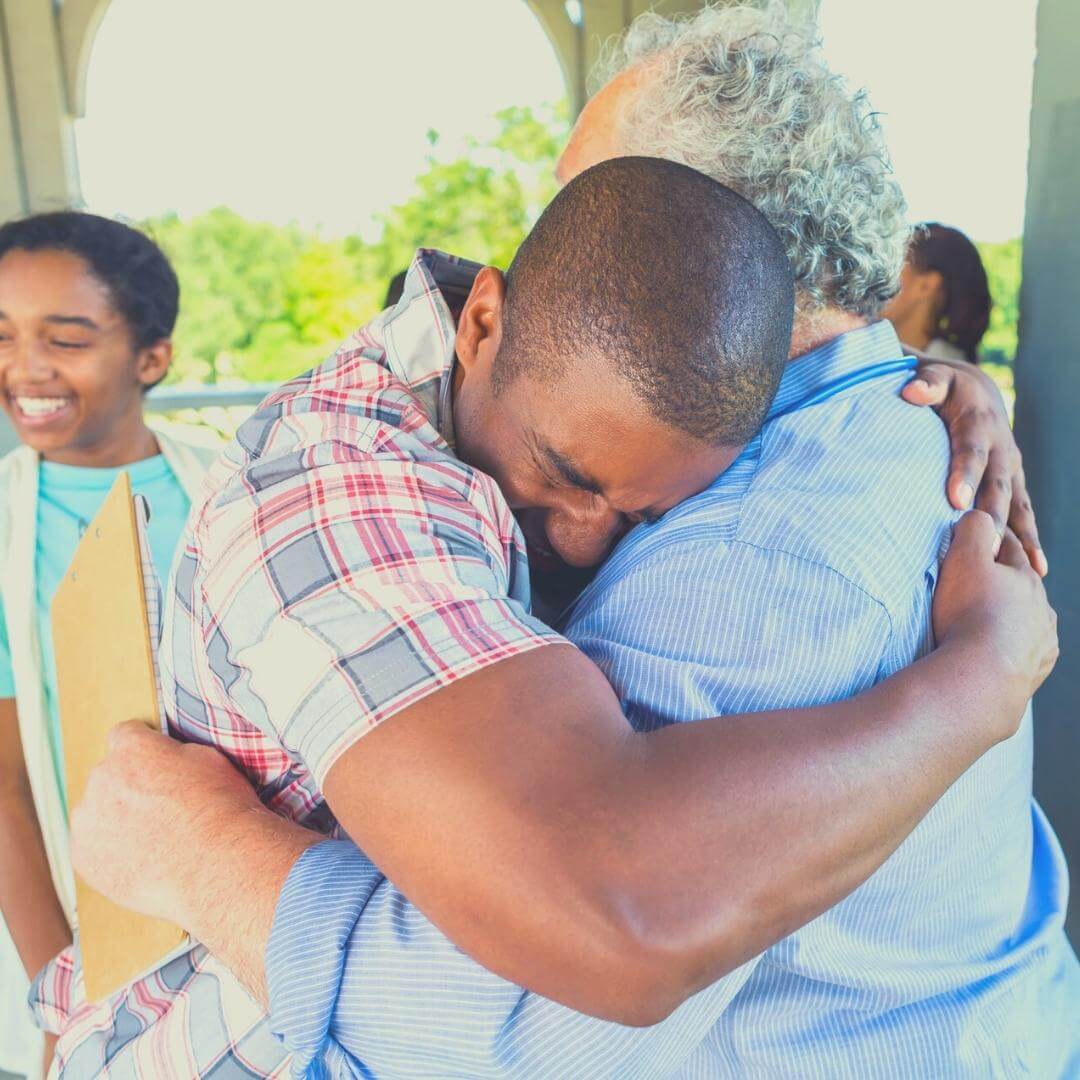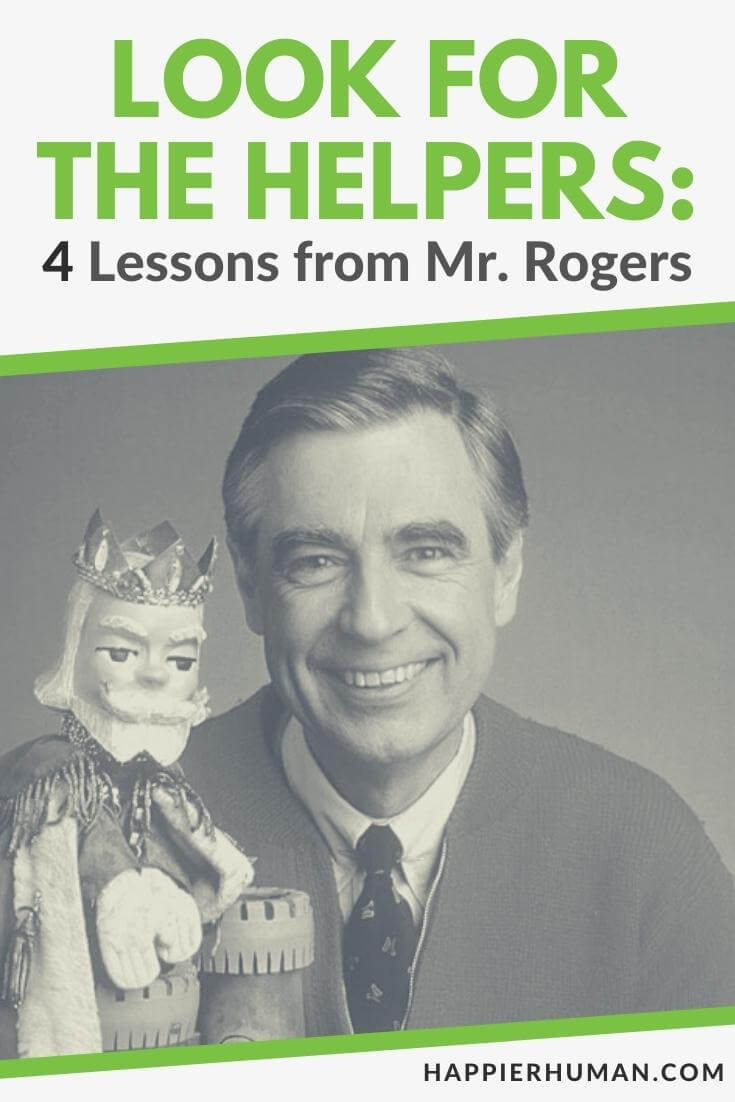Unless you grew up living under a rock, most of you have at least heard of Mr. Rogers and his show, Mr. Rogers Neighborhood. After its original debut in Canada, the show aired in the United States on February 19, 1968 and ran until 2001.
The series targeted preschool children ages 2 through 5, teaching them the importance of being good people and treating others with kindness and respect. He taught kids to foster their self-esteem and be patient with those different from them. He encouraged them to use their imaginations and dream big!
But it wasn’t all sunshine and puppetry. Rogers tackled complex subjects in a way that young children could understand while trying to calm their fears and anxiety by instilling them with a sense of hope.
Today, we will discuss this famous quote that incentivized kids to look for helpers. We will briefly touch upon why some adults take issue with it before going into four lessons we can all learn from the words Rogers’ mother spoke to him… which have since been passed onto future generations.
What Did Mr. Rogers Mean with His Look for the Helpers Quote?
“When I was a boy and saw scary things in the news, my mother would say, ‘Look for the helpers. You will always find people who are helping.’”
Believe it or not, there are adults among us who believe Rogers’ famous quote has become nothing more than a platitude people “drop” in an attempt to mask the reality of tragedy in this world. These people attest that the victims and families of tragic events, such as mass school shootings and bombings, are not going to feel better by hearing these simple words.

While this may be true in the heat of the moment, the quote was in no way intended to make light of such things… but rather create a sense of hope in humanity. Rogers wanted to reassure children that one bad person (or group) does not define the rest of the world. He wanted them to know that while bad things happen, there will always be something good that comes from it.
As with life, if you examine this quote without blinders on, you’ll be able to see there is so much more to be learned. With that, let’s delve into the four lessons I’ve shared with my children from “Look for the Helpers.”
LESSON #1: There is Always Hope
If you look for these people, any people… even those doing the most minor things, you’ll know there’s hope.
Mr. Rogers wasn’t just talking about the “big events” that could go wrong in life. He was referring to anything or anyone that may cause a child to be afraid or anxious.
For instance, if a child witnesses his mother faint in a store, they will undoubtedly feel worried. It is only natural. However, two things are happening at the same time.
First, an employee reaches for the child’s hand and tells them, “Help is on the way, and everything will be okay.” The child starts to calm down and believe this.
Next, the paramedics arrive and begin to treat the child’s mother. The child sees these strangers helping and knows that things will work out and that he is not alone.
Even if the worst-case scenario occurs that day, the child will eventually heal, for that is what time does. It heals all wounds. And when it does, the biggest takeaway from that day will no longer be crushing sorrow and fear but rather the helpers who rushed to his mom’s side… and his.
LESSON #2: Be a Helper
Don’t just look for the helpers, be a helper. It feels good to help others and be a source of comfort.
Mr. Rogers taught and encouraged children to do the right thing… even if it meant making scary and hard choices. He taught them to stand up to bullies, befriend other lonely children, and respect their elders.
He wanted kids to do good and, in turn, professed that they would feel good. This is true at any age. Helping others feels good.
While it is beautiful to look for helpers, doing so wouldn’t be possible without people willing to help out in challenging situations. For instance, a child who is being picked on for having a stutter may simply be looking for one child willing to be their friend and see them for who they really are. Who will be that child?
Help others today, and the favor will be returned tenfold. That is what Mr. Rogers taught. What goes around comes around… and kindness is contagious.
LESSON #3: Acknowledge Emotions
It is through comforting people in their times of weakness and despair that others find their strength. Finding helpers will not make anyone’s fears go away, but they will feel less alone and find the courage to stand again.
When he shared these words on national television, Mr. Rogers never intended to dismiss a child’s feelings. On the contrary, he wholeheartedly acknowledged their emotions. He was letting them know that they weren’t alone in the world, nor were they alone in the way they felt.
When you hear about acts of heroism and kindness, you can’t help but wonder about their effect on the person in need. My husband and I recently watched a movie with our older children called Thirteen Lives. It is the true story of a soccer team from Thailand that gets lost while exploring a series of rapidly flooding caves.
Even though the boys were terrified, not knowing if they were going to survive, they were given hope when they heard the voices of rescue divers coming to their aid. And with that, they decided not to give up, despite how scared they were. They were courageous and did what they had to to see their families again.
This lesson teaches us that no matter how dire the situation may seem, if we look for helpers, we may find the courage to make it through. The hope these people bring is often enough to take our minds off of our desperation.
LESSON #4: See the Light and Good in the World
Where there is darkness, there is light. Where there is evil, there is good. And if you just take the time to look, you will usually find more of the latter.
While this lesson may sound like a quote from the Bible, we've all been told stories of good versus evil: stories about angels versus the devil, super heroes versus villains, and man versus man.
Everywhere you look, evil is lurking. Whether it takes the form of another human being or an addictive substance, evil feeds on opportunity. The good news is that if we refuse to acknowledge its darkness, it will die of starvation.
Mr. Rogers wanted children to see the light and the good in this world… and not be distracted or discouraged by those who try to extinguish the candles of faith and hope. He stressed that there were more good people doing good things than there were evil. The very power of evil lies in getting us to doubt our belief in good.

I recall a lesson I had with a theology professor in college who was trying to teach us about looking for good among evil. At the start of class, she simply asked us, “If you buy a fresh bunch of juicy grapes and one is rotten, would you throw them all out? Or throw out the bad one and enjoy the goodness of the rest?”
Of course, we all answered to toss out the lousy grape, attesting that it would be wasteful not to. And as simple as that response seemed, it struck a more significant chord. One bad thing (or person) should not spoil your opinion of the rest.
Humanity is not perfect. We are all flawed in some way… but if you look for the light, you’ll never be trapped by the darkness.
Final Thoughts on the Look for the Helpers Quote
There will always be two types of people in this world when it comes to having hope… skeptics and believers. Whether you seek hope in humanity or hope for yourself to prosper, the belief that anything is possible comes from within.
It means letting go of negativity and having a little faith in people… and in God if you believe in a higher power. The Bible says that God made us all in His image, and if that is true, how can we not believe in the power of the helpers in our world that Mr. Rogers encouraged kids to look for?
It is your right to disagree, but remember that Mr. Rogers’ audience was small children. Children are not born knowing the notion of skepticism. They are not born with low self-esteem. They are not born with fear (in fact, they often feel invincible). Children are only born to believe what they are told by those adults they trust… and for years, Mr. Rogers was one of those people.
Mr. Rogers's Neighborhood was a “safe place” where parents could leave their kids for a while and know they would be in good hands.
A place where the morals being taught at home were reinforced in a way children could relate to. There is no harm in having them look for the helpers… there is only harm in teaching them to give in to fear and adversity. Kids need positive influences, and those around them need to foster a feeling of hope, even if it is only an illusion at times.
They need encouragement—we all do. If you’re feeling a little pick-me-up or dealing with negative people, read our article on 101 Toxic People Quotes to Stay Away from Negativity.
See more posts featuring some powerful life lessons:
- The Oak Tree Poem: 3 Lessons for Your Life
- Chop Wood, Carry Water: 7 Important Life Lessons
- Death Smiles At Us All: 3 Lessons from This Quote?
- 5 Lessons to Learn from a Glass Half-Full Type of Person


